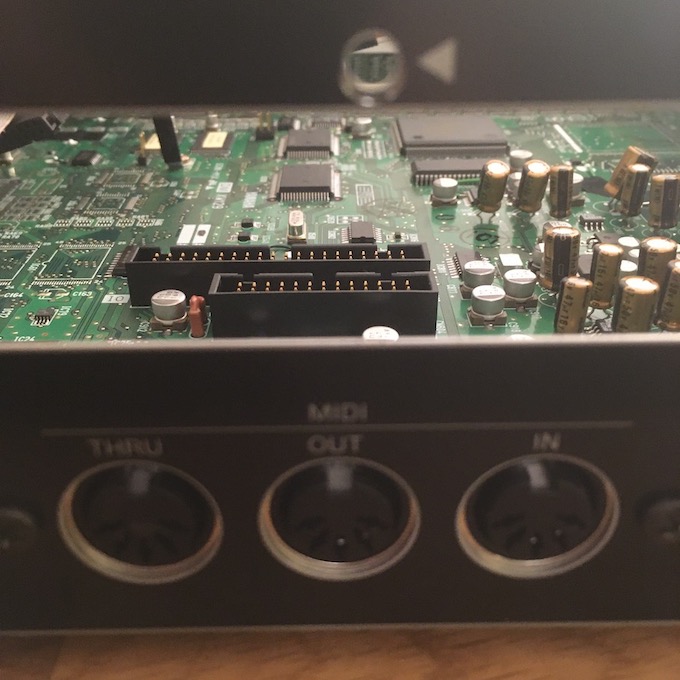Yamaha A4000 and the AIEB1 Board
Most likely the final upgrade for my Yamaha A4000 sampler was the AIEB1 I/O Expansion Board. It adds digital I/O (both optical and coaxial) and assignable outputs to the A4000 (and A5000). The board is still readily available in the second-hand market, but if you're going to get an A4000/A5000, look for one with the board already installed, and you will probably get a better price than buying it separately.
This digital I/O board allows the best possible sound quality when acquiring samples into the A4000/A5000 (and removes the hassle of loading them from a floppy drive, although these methods need not be mutually exclusive). Also, the output from the sampler can now be fully digital if your audio interface or mixer is also capable. I'm currently using a PreSonus 1824 USB which has a coaxial digital interface, and I've connected my Yamaha A4000 through that. (The PreSonus 1824 USB has been replaced by the PreSonus 1824c* with a USB-C interface.)

If you manage to score an AIEB1 I/O Expansion Board, installing it easy with the instructions found in the sampler manual. Do make sure that your board purchase includes both the power cable and the data cable.
To install the AIEB1 board you will first need to remove the cover plate above the MIDI ports. The board will be supported by the same screws that used to hold the plate, so don't lose them!

Once you have installed the board, secured it to the back panel, and connected the power and data cables, there is nothing left to do but replace the cover (15 screws, remember) and dive into the manual to see how the board can be utilized.
With the digital I/O and the six assignable outputs you can, for example, output a selected sample or program to a dedicated output of your choice, independent of the main stereo output. Or, you can connect a sound source like the Zoom U-44* audio interface, possibly equipped with a microphone or two, using the digital input. If you connect a computer audio interface with digital output to the AIEB1 digital input, you could just play back samples into the A4000 using a fully digital signal path, without transferring the samples first to a floppy disk or relying on the MIDI Sample Dump Standard.
As stated earlier, for my purposes this Yamaha A4000 sampler is now complete in terms of upgrades, because I'm not willing to use any SCSI devices. So I should now be able to concentrate on having fun with the A4000 filters and effects! If you'd like to see videos of the A4000 in action, or have anything to ask or share about this sampler, drop me a note and I'll do my best to help you.
FULL DISCLOSURE: Links marked with an asterisk* lead to the Musikhaus Thomann* web store. As a Thomann "Linkpartner", we receive affiliate points for any purchases you make through these links.
 digitalsynth.net
digitalsynth.net